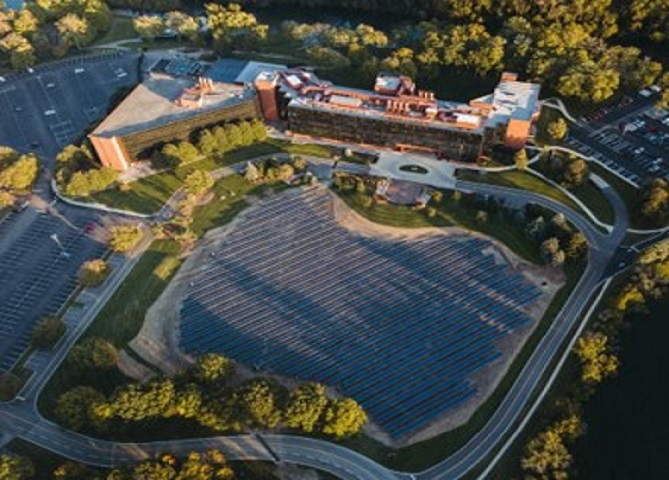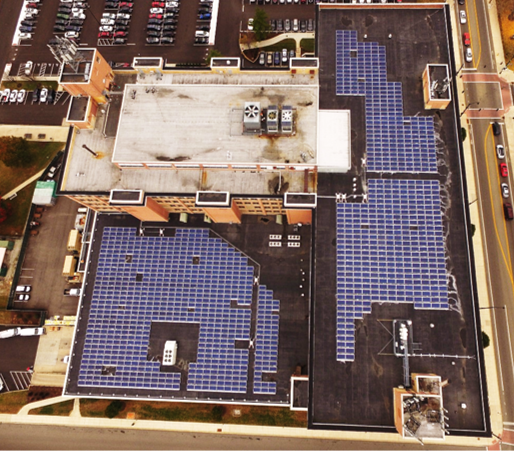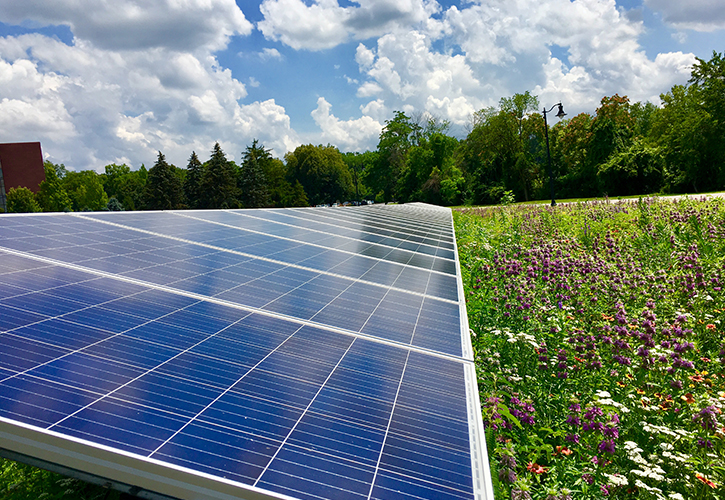As part of its commitment to sustainability, the University of Dayton in Ohio became a fair trade university and was the first Catholic university in the nation to divest from fossil fuels. This means UD is committed to renovating or building campus facilities that source power from clean energy, while providing a greener campus in which their students can engage. Solar energy plays a key role.
Solar Solutions
In 2018, Melink Solar & Geo collaborated with UD to install two arrays, totaling a combined 4,026 panels with a capacity of 1.26 megawatts of power. A ground-mounted array was installed at Curran Place, and a roof-mounted array was installed at Fitz Hall. As part of a long-term power purchase agreement, Melink engineered and constructed the arrays, selling the generated electricity to the university.
The solar arrays provide nearly 10 percent of the power consumption of both buildings, as well as power electric car stations at each location. UD has the option to purchase the arrays after eight years. Students, faculty, and researchers participated in the installation of the modules and incorporated the sustainability project into research and curriculum.


Result
This project helped to define UD as a sustainability leader in the Midwest, as well as among universities. The ground-mount installation resulted in a stunning living laboratory complete with a prairie garden — one of the first in Ohio — to attract native pollinators. The site is home to 81 species of plants that keep the ground cool for panel efficiency, increase the habitat, and create an experiential learning space for students.

The solar arrays provide about 2 percent of the power campus-wide and offset carbon emissions by about 1 percent annually. Over their 30-year lifespan, the university estimates a $300,000 savings and prevention of 39,000 metric tons of carbon dioxide being added to the atmosphere.
Download the full case study.